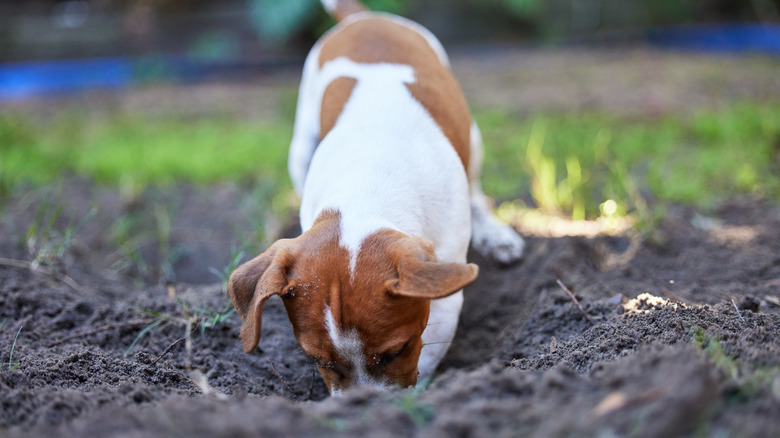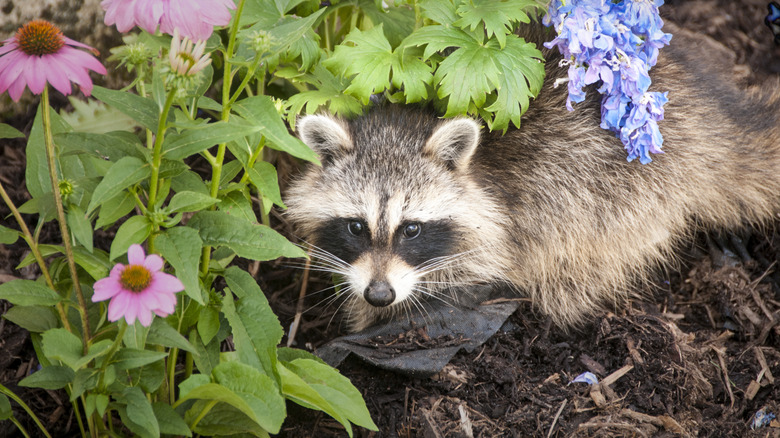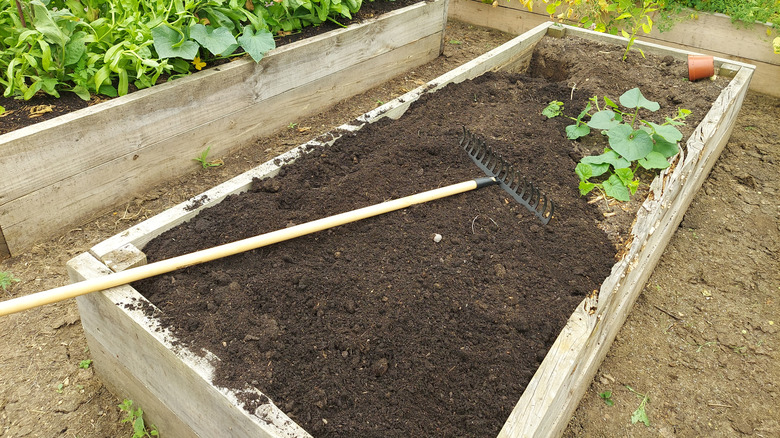The Biggest Downside Of Using Bone Meal Fertilizer People Never Talk About
Tons of avid gardeners swear by the boosting power of bone meal as fertilizer for everything from tomatoes to zinnias in the garden. This all-natural plant food is exactly what it sounds like: Crushed animal bones resulting in a white, powdery substance. So, how does it work? Bone meal is rich in phosphorus and calcium, which are necessary nutrients for plants.
Mixed into soil, bone meal can help plants produce new growth and blooms. But there is a major downside — especially if you don't apply it correctly. The biggest is that bone meal is known to attract carnivorous pests looking to feed on the remains of other animals. If you have a dog, you might even find it digging deep into your flower beds, damaging roots and disturbing bulbs.
So, how do you reap all the benefits of bone meal without inviting pests? The key is proper application. We'll offer tips on how to get the best results if you want to use bone meal as a natural fertilizer for your garden.
Why bone meal attracts pests
Bone meal sold at nurseries and garden centers is usually sourced from cows. The bones are steamed then crushed before being bagged and sold. This simple soil addition is a total game-changer for tomato gardens and flower beds alike due to its high concentrations of phosphorus and calcium. Because it's a natural byproduct of animals, bone meal often emits a strong odor — one that humans dislike and scavenger animals love.
Perhaps the biggest downfall of using bone meal is that you'll increase your chance of attracting nuisance raccoons, skunks, and even rodents unless you've properly applied it. Have dogs? Chances are they'll also smell this new addition to your backyard garden beds, and you'll be fending off your pets each time you take them outside for a potty break. While it might not be a huge problem to see more of these animals in your backyard, the real issue lies in how the animals behave.
When raccoons and skunks smell this powerful odor, they assume there is a dead animal nearby. When they don't find it immediately, they start digging holes and even removing patches of turf in search of their meal. When bone meal is mixed into your soil and beds, the animals will dig and dig but never find anything. In short, you've attracted nuisance animals to your yard and they've wreaked havoc in search of a meal.
Preventing pests while using bone meal
Before you add this pest-attracting mixture to your soil, be sure you know what you're doing! For the best results, experts suggest adding bone meal into your soil at least 2 inches deeper than your seeds and in the holes before planting bulbs, so the scent isn't wafting throughout your backyard. It's easiest to incorporate bone meal with new plants by adding 1 to 2 tablespoons of bone meal to each planting hole.
If you're adding bone meal to an existing plant, you'll have to be careful to mix it into the top layers of soil without harming the roots of your plants. You can also sprinkle bone meal on the top layers of soil and mix it in with a spade or rake. To apply the correct amount of bone meal, check the package instructions. Watering your plants after application will help the nutrients to reach the plant's roots. Bone meal is considered a slow-release fertilizer, so it will provide nutrients to plants over the course of one to four months before you'll have to reapply it. Fewer applications will mean you won't have to worry about unwanted visitors too often (but, again, follow package instructions).
You might need to add an extra layer of protection after first applying bone meal. You may want to install chicken wire to keep pests from digging up your bulbs and other plants. One surefire way to banish raccoons from your property is by using scent repellents. In severe cases, you might need to trap and relocate the animals or hire professional help.


